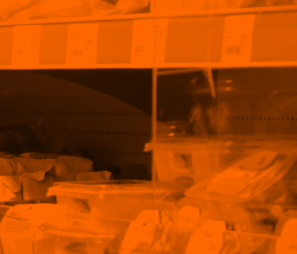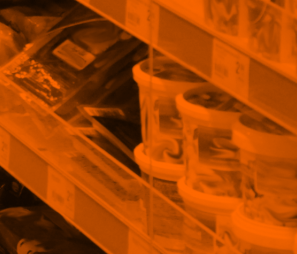London Packaging Week is regularly home to some of the most jaw-dropping packaging in the world – and invariably, much of it comes from the premium drinks sector. Here, we unpack the magic of an industry that somehow captures lightning in a bottle again and again.
Nothing in packaging begins its life quite as dramatically as a glass spirit bottle.
Unassuming raw materials like silica and soda ash are combined and melted down at fearsome temperatures of around 1,500°C. The resulting substance calls to mind the fiery heart of a volcano, and the angry orange fires of creation. Precise gobs of superheated molten glass are then sliced off before being carefully moulded, blown, or spun into the desired shape.
It’s an evolution of an art that has thousands of years of history. And, after all this time, there’s no better medium for spirits brands to tell their unique stories and captivate consumers.
A taste for storytelling
In a way, spirits are their own utterly unique form of storytelling. Each sip tells a story of the interplay between the natural environment that the spirit’s ingredients were grown in, the equipment that was used to make it, the craftsmanship of the artisans who blend those ingredients using techniques that go back centuries – and, of course, the endless forward march of time, which helps the spirit absorb the subtle, rich flavours of the casks they are aged in.
An Islay whisky takes on the peaty, saltwater-lashed characteristics of its homeland. The smoky sweetness of an oak-aged mezcal can transport you to the hazy, criss-crossing canyons of southern Mexico. Cognac, brandy, vodka, spiced rum – each one is different, and takes you on its own journey with every mouthful.
Capturing all of that in a bottle that also delivers from a functional perspective is a challenge that requires a rare talent to overcome. Unsurprisingly, spirits brands are turning to nonstandard shapes that use intricate, delicate details to tell these complex stories, adding a little theatre to the drinking experience. Consumers expect the extraordinary when they purchase a high-end spirit, and that extends to the bottle, too.
And, by producing a bottle that appears to be made with exquisite attention to detail, this implies to the consumer that the spirit inside is made with the same level of craftsmanship. In that sense, the bottle is just as important as the spirit it contains.
More than a bottle
Differentiation in spirit bottles is nothing new. Decorative bottles and flasks made using delicately blown glass have existed for hundreds of years. But modern manufacturing means modern spirit bottles are free to explore near-limitless creative possibilities.
A partnership between two luxury brand powerhouses – whisky maker The Macallan and car manufacturer Bentley – produced a headline-grabbing example of this fact earlier in 2024 with Horizon whisky. This single malt featured an innovative horizontal bottle that managed to combine the heritage of both brands with a sense of pioneering subversiveness.
One of the cardinal rules of storing whisky is that you never keep bottles on their sides. The alcohol in the whisky eats away at the cork over time, spoiling the taste and eventually degrading the cork. This bottle turns that rule on its head – literally – with a unique horizontal design that sits on an oak plinth. The glass is surrounded by a twisting outer layer that resembles a ribbon made from aluminium and copper, lined with leather, and inlaid with oak.
Everything, from the material selection to the shape of the bottle and the subtle details that adorn it, have been selected to tell the combined story of the two brands.
While some choose to subvert tradition, others choose to embrace it. Tequila Barajas, proudly displayed at our sister event Paris Packaging Week earlier this year, is bottled in hand-painted porcelain flasks that are adorned with designs that pay tribute to the heritage of tequila. Unlike The Macallan’s Horizon bottle, there is no space-age precision engineering on display here. Structurally, the bottle is simple. However, it displays a deep, genuine love of the art of tequila-making and a painstaking attention to detail in crafting the intricate designs, inspired by the blue agave plant. Each bottle takes over ten days to finish, elevating product packaging into an art form all of its own.
The future of design
Bottlemaking is a timeless art that often pushes the limits of what is possible. But could this era of limitless creativity soon be at an end?
Sweeping sustainability legislation, such as the EU’s Packaging and Packaging Waste Regulations (PPWR) has interesting implications that could place tighter controls on what is possible in spirit packaging design. While a necessary positive step aimed at safeguarding the future of the planet, laws like PPWR do pose some challenges to the premium drinks industry.
While glass is infinitely recyclable, it is very heavy and highly energy-intensive to produce. This means spirit bottles that use oversized, elaborate designs may fall foul of legislation aimed at reducing packaging weight and environmental impact.
The glass industry is adapting by adopting innovative electric furnaces that are powered by renewable energy. Other measures may include developing hybrid furnaces that are powered by a combination of electricity and hydrogen.
Another alternative could be to incorporate more recycled glass into spirit bottles. Traditionally, this has been avoided as recycled glass is of variable quality, and often produces bottles with a slightly discoloured or cloudy look. Can the boundless creativity within the industry turn this apparent negative into a positive? Pernod Ricard, the owner of mass-market spirit brands like Absolut and Beefeater, seems to suggest so, having unveiled recycled glass bottle designs for several of its brands in recent years. These bottles are premiumised using an embossed aluminium cap, replacing the plastic cap that was previously used. It remains to be seen if this changes the perceptions around recycled glass, to the extent that it becomes a realistic option for the luxury segment.
Perhaps the most viable option is for premium drinks brands to simply use less glass. This could be the end of the ‘more-is-more’ approach to bottle design, in favour of a lightweight minimalism that consumes fewer materials while still evoking a sleek sense of style.
While the art of spirit bottles is likely set to change, the industry is in the unique position of being able to call on a rich legacy of creativity and innovation as it attempts to overcome the challenges it now faces. Whatever form the spirit bottles of the future take, you can experience it first-hand by joining us at London Packaging Week, the home of cutting-edge luxury packaging innovation.
Manufacturing & Engineering Magazine | The Home of Manufacturing Industry News















